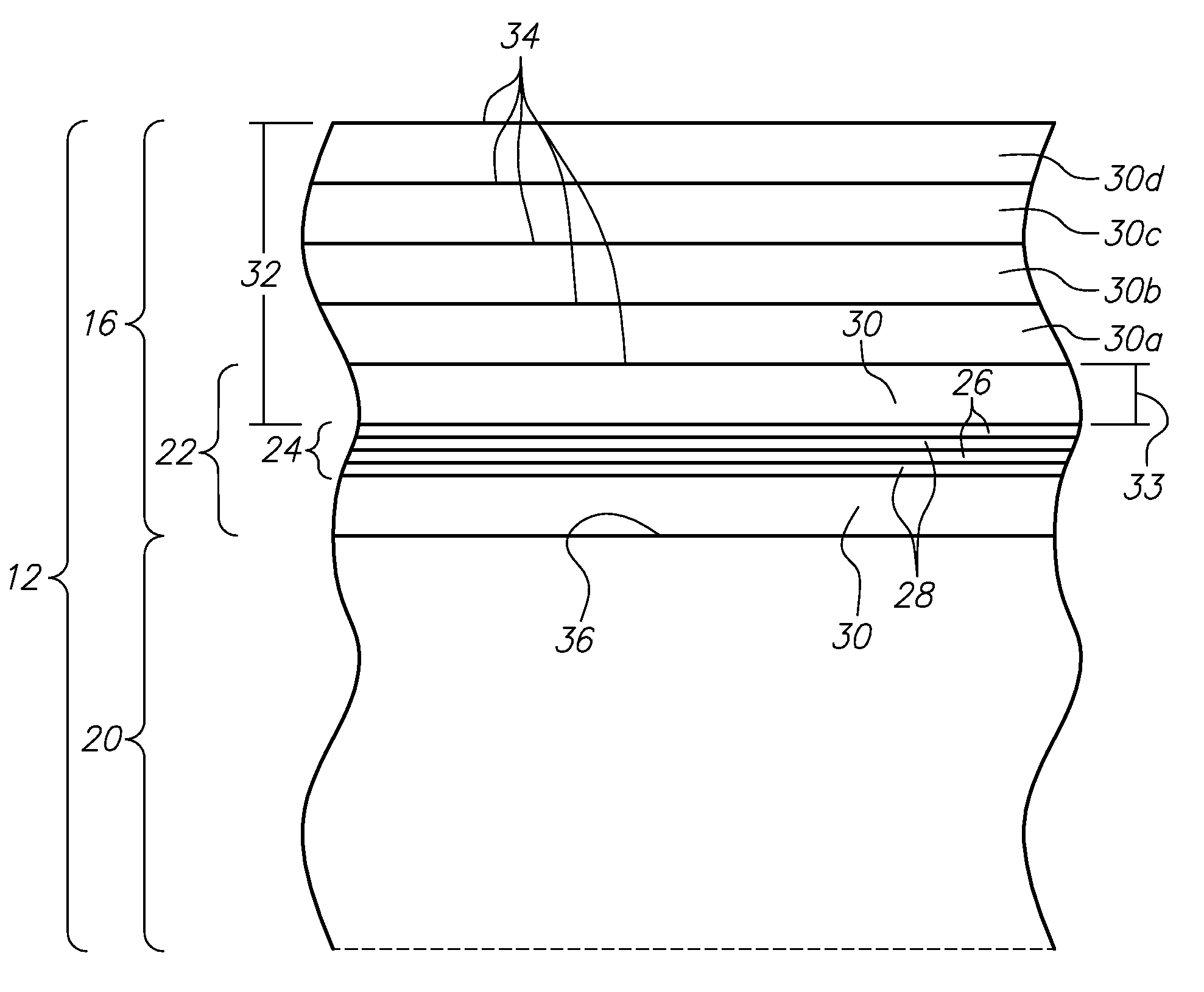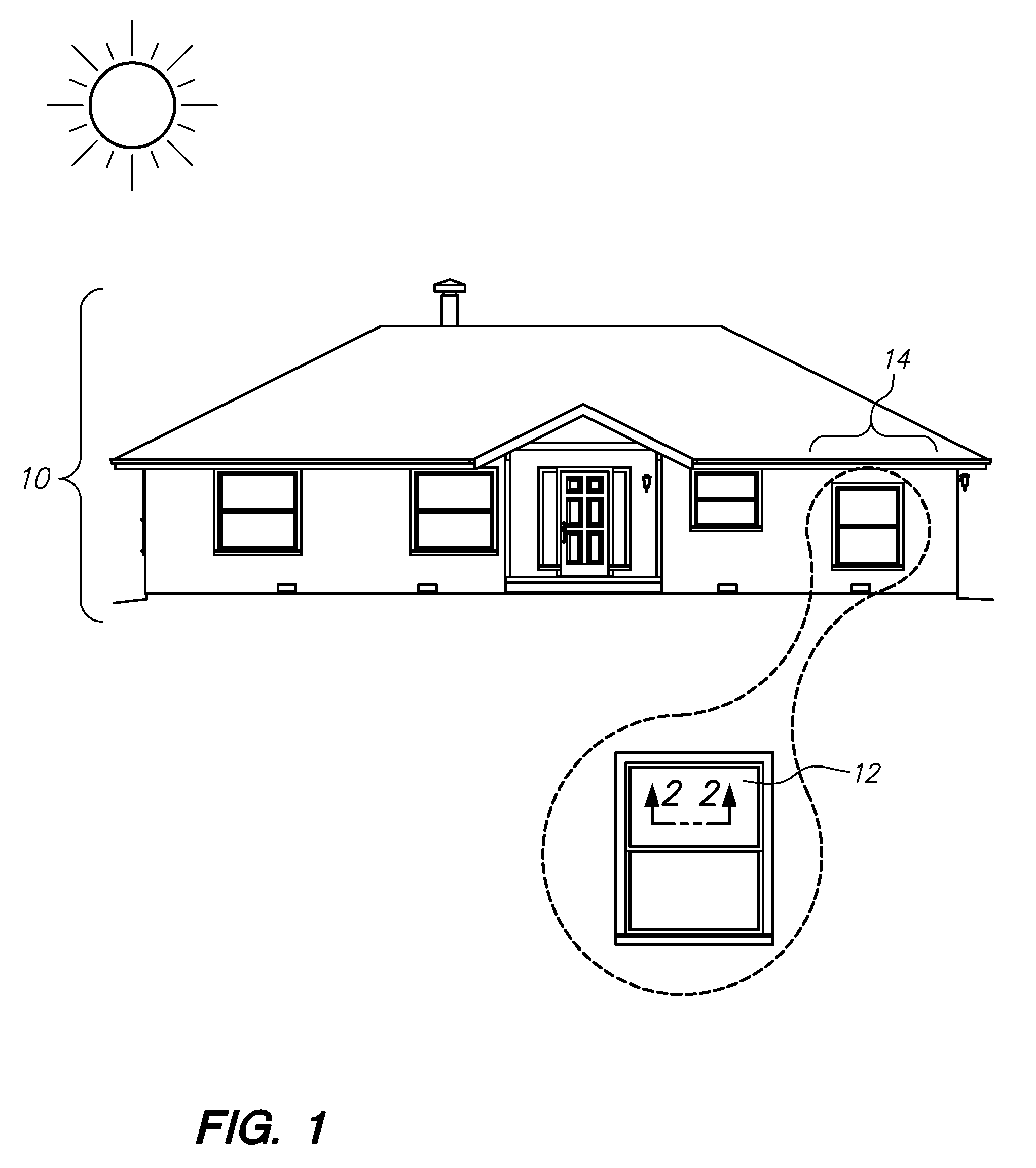Low Absorption Spectral Selective Solar Control Film for Fenestration
a solar control film and low absorption spectral technology, applied in the direction of walls, layered products, chemistry apparatus and processes, etc., can solve the problem that one side of the film does not allow oxygen diffusion, and achieve the effects of reducing the oxidation of a silver layer embedded, reducing the oxidation rate of a silver layer, and reducing the oxidation ra
- Summary
- Abstract
- Description
- Claims
- Application Information
AI Technical Summary
Benefits of technology
Problems solved by technology
Method used
Image
Examples
Embodiment Construction
[0029]Referring now to FIG. 1, a building structure 10 having a window 12 is shown. The window 12 protects the occupants from environmental elements (e.g., wind, rain, etc.) yet allows the occupants to view the surroundings from within a room 14 of the building structure 10. As shown in FIG. 2, the window 12 may have a film 16 attached to an exterior side 18 of a glass 20. The film 16 may be generally optically transparent in the visible wavelengths and generally reflect radiation in the non-visible or infrared wavelengths. The sun's rays transmit solar radiation both in the visible light range and also in the infrared range. A majority of the radiation in the infrared range may be reflected back to the exterior 11 of the room 14 or the building structure 10 by the film 16. A small portion of the energy may be transmitted into the room 14 through the glass 20 of the window and a small portion is absorbed by the glass 20, converted into heat and re-radiated into the interior 13 of th...
PUM
| Property | Measurement | Unit |
|---|---|---|
| Thickness | aaaaa | aaaaa |
| Dielectric polarization enthalpy | aaaaa | aaaaa |
| Structure | aaaaa | aaaaa |
Abstract
Description
Claims
Application Information
 Login to View More
Login to View More - R&D
- Intellectual Property
- Life Sciences
- Materials
- Tech Scout
- Unparalleled Data Quality
- Higher Quality Content
- 60% Fewer Hallucinations
Browse by: Latest US Patents, China's latest patents, Technical Efficacy Thesaurus, Application Domain, Technology Topic, Popular Technical Reports.
© 2025 PatSnap. All rights reserved.Legal|Privacy policy|Modern Slavery Act Transparency Statement|Sitemap|About US| Contact US: help@patsnap.com



